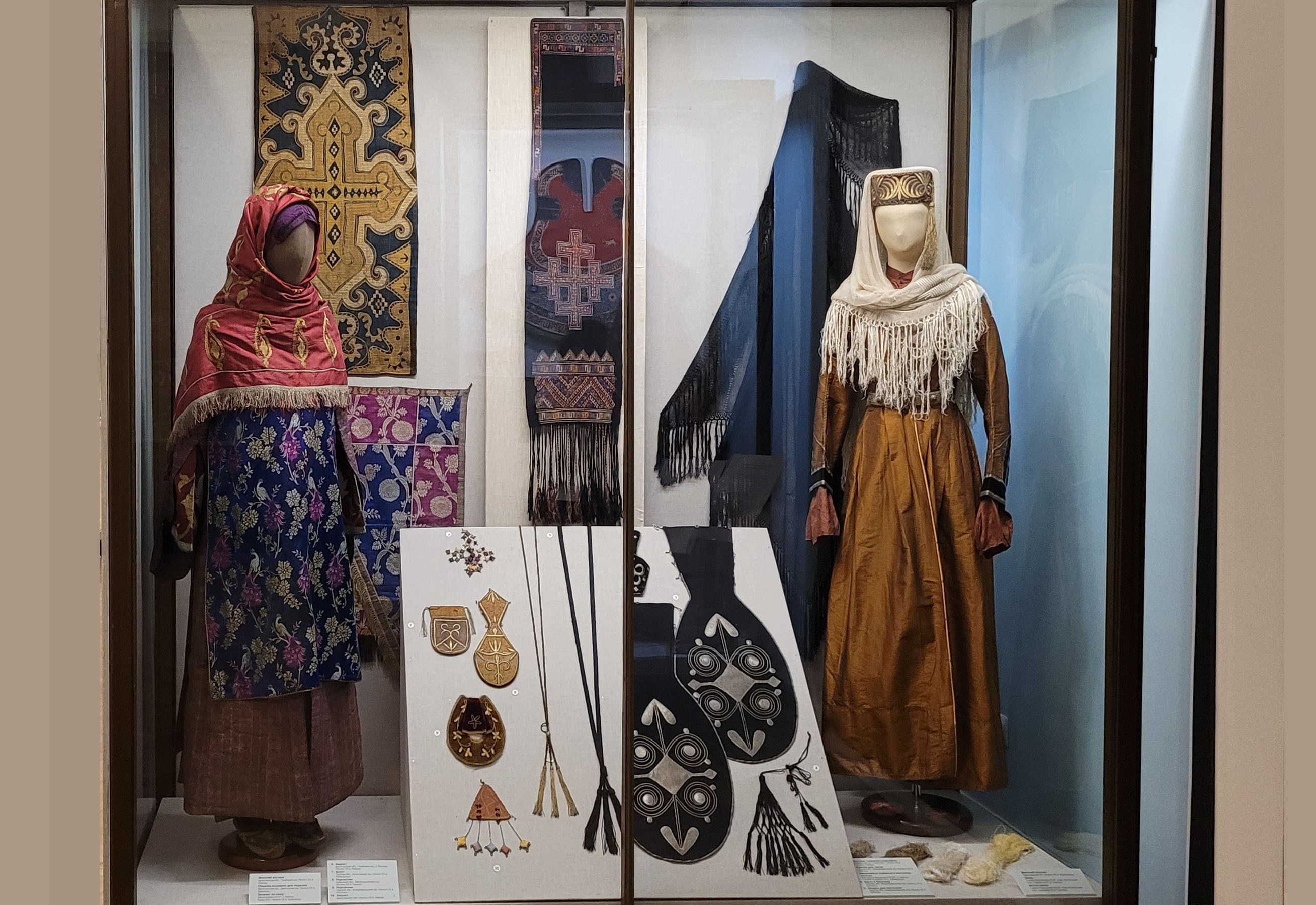Silk in the Traditional Culture of the Peoples of Caucasus

The history of sericulture in the North Caucasus and Dagestan regions in the 19th century shows just how much it was influenced by culture and politics. In the first half of the century, silkworm breeding in Cossack villages developed under state initiative; additionally, there were many local sericulture centers rooted in traditional economics. However, the gradual and steady process of silkworm cultivation was not compatible with the militarized life of the North Caucasus population; since the mid-20th century, sericulture has been in decline.
The lack of local silk products was made up for with imports, and under the strict standardized culture of highland societies, they could not occupy a random place in everyday life. Silk clothes were mostly for women; it was a way to demonstrate their family status. The richest silk garbs were meant for girls of marriageable age, brides, and young married women. Silk was used to make head covers, shirts, and elegantly decorated outerwear for young women. The gold needlework played a special role in the decor of the North Caucasian women’s costume, which was also adorned with special sleeve pendants. The girls also decorated small men’s purses, tobacco pouches, and snuffboxes with gold thread embroidery; these objects were often festive and ritual gifts. In Dagestan, women’s festive attire included a headdress, satin embroidered trousers, a fine silk dress, as well as an apron of rich brocade.
The population of the mountainous regions of the Greater Caucasus, such as Khevsureti, Tusheti, and Dido, has their own traditions of silk consumption. Here, in hard-to-reach villages, silk threads purchased occasionally from traveling merchants were valued highly and spent extremely reluctantly; silk was used for wool embroidery on clothing pieces only in certain, most significant zones. For example, a woman’s head cover would be embroidered with silk only along short, visible hems.
Women’s attire. Karachay Autonomous Region. Early 20th century. Karachays
Shawl. Novoosetinsky Settlement, North Ossetian Autonomous Soviet Socialist Republic. Mid-20th century. Ossetians
Silk bundles. Novoosetinsky Settlement, North Ossetian Autonomous Soviet Socialist Republic. Mid-20th century. Ossetians
1. Women’s head cover. Tiflis Governorate. Late 19th – early 20th century. Khevsurians
2. Watch case. Vladikavkaz District, Terek Region. Early 20th century. Ossetians
3. Women’s dress sleeve decorations. Nartan, Kabardino-Balkarian Autonomous SSR. 1st half of the 20th century. Kabardians
4. Bashlyk hood tassel. Vladikavkaz District, Terek Region. Early 20th century. Ossetians
5. Pistol lanyard. Vladikavkaz District, Terek Region. Early 20th century. Ossetians
6. Amulet. Gonoda, Gunibsky District, Dagestan Region. Early 20th century. Avars
7. Tobacco pouch. Nalchiksky District, Terek Region. Early 20th century. Kabardians
8. Watch stand. Batalpashinsky District, Kuban Region. Early 20th century. Circassians
9. Watch stand. Vladikavkaz District, Terek Region. Early 20th century. Ossetians
10. Amulet. Dagestan Region. Early 20th century. Avars
Women’s attire. Gunibsky District, Dagestan Region. Early 20th century. Avars
Pillow embroidery sample. Darginsky District, Dagestan Region. Early 20th century. Dargins
Alcove curtain. Kubachi Settlement, Dagestan ASSR. Late 19th – early 20th century. Kubachis



